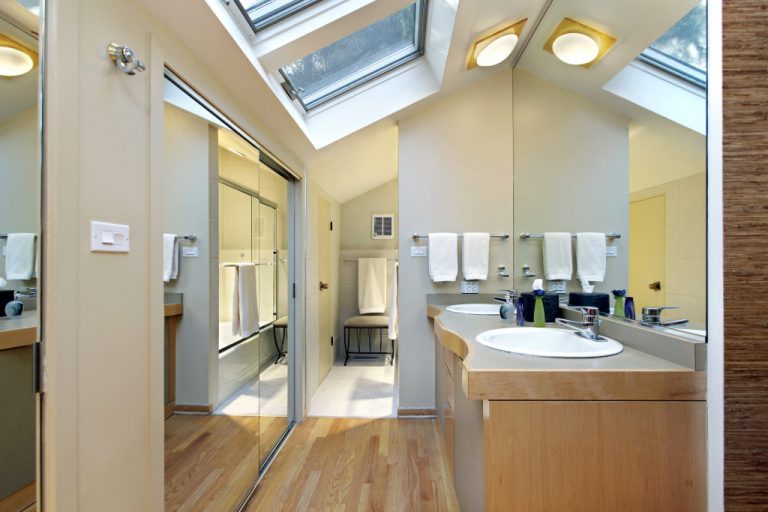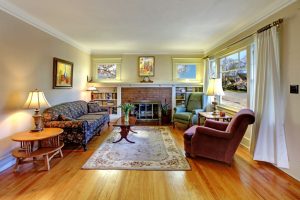- Maximizing the natural light in your home can create a bright and inviting atmosphere and improve mood and health.
- To make the most of natural light, assess windows, skylights, and doors; use light-colored paint and décor.
- When choosing paint colors, look for shades that are low-maintenance as well as something easy to clean.
- Strategically placing mirrors around the house can reflect natural light to brighten a space further.
- Artificial lighting can also supplement natural light; high-color bulbs for task lighting and lower shades for relaxation.
Natural light is an essential element of any home. It creates a bright and inviting atmosphere, enhances the overall design, and positively impacts mood and well-being. However, many homes need better lighting, leaving them feeling dark, dreary, and uninspiring. The good news is that there are plenty of ways to maximize natural light in your home and brighten up your space.
One could use specific techniques to achieve a natural glow to ensure its full potential. It may sound like a lot of effort at first glance. Still, with the correct information and dedication, you’ll find that strategies such as strategic window placement and interior design choices have positive long-term effects on your living experience.
This article will explore some of the most effective techniques and strategies for bringing more natural light into your home, from simple adjustments to more substantial renovations. Whether you’re looking to create a cozy reading nook or transform your living space, these tips will help you make the most of natural light and create a bright and beautiful home.
Assessing Your Home’s Natural Light Potential
When assessing your home’s natural light potential, it is crucial to evaluate the areas with access to the most natural light and note which areas may need additional lighting.
First, determine where any windows are located, either on the ground floor or upper level of your home—this is usually enough information to form an accurate assessment. If you need more detail, you can use a minimalistic approach to measure how much sunlight a specific window receives throughout the day by setting up temporary blinds over the window so that you can track shadows as they pass by.
You should also research the direction your house faces for potential sun exposure and consider any barriers, such as trees or buildings, that could reduce natural light in certain areas. Through these, you can then plan ways to bring more natural light into your home and make adequate decisions about which type of lighting best fits each space.

Strategies for Maximizing Natural Light
Natural light is one of the best energy sources as it is renewable and doesn’t require electricity. Assess basic room features like windows, skylights, and doors to maximize natural light in your home.
Using Light-colored Paint and Décor
Using light-colored paint and décor can create a beautiful atmosphere in any space. Painting a room with lighter colors will make it appear larger, brighter, and more inviting. Furthermore, lighter colors encourage natural sunlight to bounce around the room, creating an ambiance of vibrancy and well-being. Light-colored paints are also great investments as they are low-maintenance and more accessible to clean than darker tissues.
If you use light shades on your walls, you can add interest by using dark-colored accessories like curtains or pillows that can instantly change the look of your space without expensive remodels or renovations. For best results, research the different paint shades available before deciding which ones best suit your style, preferences, and budget.
Utilizing Reflective Surfaces
Another effective strategy for maximizing natural light in your home is using reflective surfaces. This can include using mirrors, glass, and other reflective materials to bounce light around your space. One way to utilize reflective surfaces is by strategically placing mirrors throughout your home. For example, placing a large mirror opposite a window can reflect natural light and make a room appear brighter and more spacious.
Moreover, placing smaller mirrors on walls can reflect light and help brighten up dark corners. Glass surfaces, such as glass tabletops or shelves, can also help reflect light and add brightness to a room. If privacy is a concern, frosted or tinted glass can be used instead.
Installing Larger Windows and Doors
Installing larger windows and doors can be a great way to maximize natural light in your home. With more wide-open views of the outside world, larger windows, and doors will flood your interior with beautiful natural light and help to reduce energy costs in the long run.
Facilities such as skylights strategically positioned on the roof can contribute further to providing optimal amounts of natural light. If you’re ready to make a change, consider installing large windows and doors by a professional for the best results!
Incorporating Pyramid Skylight Design
Maximizing natural light in your home can take time due to building codes and constraints. Incorporating a pyramid skylight design is a great way to increase the amount of sunlight entering your space. This type of design allows for more flexibility in the types of buildings where it can be installed.
These skylights are usually fitted onto flat roofs, adding an aesthetically pleasing angle to the home and increasing natural light throughout the space. Pyramid skylights come in various sizes, offering stunning views of your backyard, making them a perfect solution for those looking to stay within their budget while enhancing their home’s atmosphere.
Enhancing Natural Light with Artificial Light
Enhancing the natural light in your home is one of the best strategies for cost-efficient illumination. Artificial light can help further capitalize on this strategy. Before selecting an artificial light source, consider the type of space you are illuminating and its purpose.
If you plan on using it for task lighting, choose a bulb with a higher color temperature, as it will help illuminate more precisely and create better visibility. On the other hand, a lower shade of light works best in relaxing environments, as these colors tend to be calming.
Placement is another important consideration; make sure that any artificial lighting is placed carefully so that it complements the natural light shining into your home and does not detract from or overshadow it in any way.

All in all, assessing and improving your home’s natural light can have many benefits. It can lead to a brighter, more uplifting home, better air quality, and fewer energy costs. Being mindful of where the natural light is coming from and making minor adjustments in décor, reflective surfaces, windows, or skylights could go a long way in making your home naturally brighter and warmer throughout the year.
And lastly, don’t be afraid to incorporate artificial light further supplement the natural light—just make sure to use bulbs with high-lumen readings to save on power costs and opt for eco-friendly options when possible. With a good assessment of your home’s current natural lighting, along with these tips mentioned today, you will be on your way to having an effortlessly bright space that feels like home.













